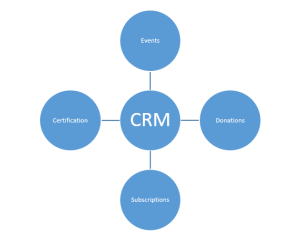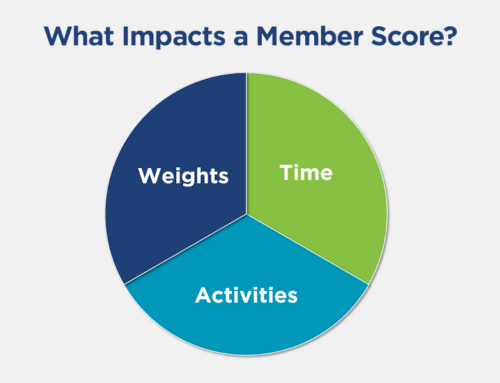Data is one of your association’s most important assets. Although collecting data is easy, creating a one-stop shop to view everything an individual or company has done with you can be complicated. For example, we have heard clients say that they do not know which members have attended a webinar because the webinar data is stored in a third-party system that is not linked by the customer ID in their Association Management System (AMS) or CRM. Without a single master record to link all of your third party data, you will have a difficult time bringing all your data together to create a 360 degree view of your customer’s interactions with you. And this is important because it allows you to measure engagement.
This difficulty with determining which system has the master record for a customer can happen when departments within an association use third party software designed for a specific need, but don’t link the system with single sign on or some other mechanism to their AMS or CRM in order to ensure that the customer can be uniquely identified. For example, an event department which needs a robust events management solution to handle international registrations needs specific functionality that the fundraising department doesn’t need and vice versa. In the past, associations would often customize their AMS/CRM in order to handle these specific functions in order to ensure that the data would be stored in a central repository. However this often resulted in an overly customized system that was difficult to maintain, as well as unhappy staff who were asked to use a system that was not best of breed. Although the association world is moving away from this CRM-centric world, allowing departments to store their data in third party systems that can only be accessed by specific individuals and are not linked to the customer’s record will result in a new set of issues.
Associations need to find a happy medium. Here are a few steps to achieve this balance:
- Determine the source of your master customer record. Choose one location that stores the master customer record ID and demographic information. If you do not have a master record, it will make it infinitely more difficult to obtain a 360 degree view of your customers.
- Match records. Create criteria to determine how to match an individual from one system to another, e.g. email and last name. Use this criteria to attempt to match records from other systems to the master system.
- Integrate the systems. Make sure you have integrations between the source of your master customer record and these separate systems. This can be as simple as storing the master record ID in the other systems, or as complicated as passing and storing information between both systems. The value of having this record ID stored in all systems is immeasurable when it comes to analytics.
- Create a data mart. Today’s systems can store lots of data, however it is rare for an association to need to see all the data stored by these systems. Therefore, it is best to determine what vital information is needed in order to pull it into a data mart that can be easily viewed by staff.
Make sure you put the effort in upfront to integrate all of your systems. The time and energy it will take to unravel the intricate web of information housed in these systems will make any future Business Intelligence initiative much for complex and difficult. As Aristotle said, “Well begun is half done.” Starting out with a well-planned data architecture will strengthen your Business Intelligence initiative and prevent it from losing momentum when you begin the highly detailed process of creating a 360 degree view of your customers.




